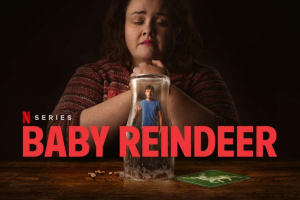A WELSH dairy farm is taking back control of future herd health and performance by rearing its own heifer replacements.
The Jarman family had operated a flying herd policy for 12 years, purchasing all their replacements since first producing milk at Gwern Hefin, near Bala, where they had previously run a traditional beef and sheep system. Those cows were all inseminated to beef sires.
The Jarmans are now making the switch from an all-year-round (AYR) calving system to a spring milk profile, to simplify the system and to maximise their farm’s grazing potential.
To inform that change and to move towards a system of breeding their own replacements, they have worked with Farming Connect, with input from consultant Andy Dodd, of the WhiteAvon Consultancy, as a focus site project.
Although the cost of rearing replacement females varies from operation to operation, Mr Dodd calculates that it typically costs £1,141 from birth to calving at 24 months.
He told farmers attending a recent Farming Connect open day at Gwern Hefin that there were clear benefits to a dairy farm by breeding its own replacements.
“A farm can breed the type of animal it needs, not make do with what might be second-rate heifers from other herds,’’ said Mr Dodd.
“Surplus heifers that come onto a market are not generally going to be the seller’s best animals, because they will want to keep those for their own herd.’’
For that reason, the replacement rate is typically higher in a flying herd – generally around 26-28%, he added.
Farmers are less in control of genetics when they purchase stock; by breeding their own heifers, they can produce a cow that fits with their system, bringing uniformity to the herd.
Although the Jarmans had generated a good secondary income by selling beef animals from their flying herd, the value of beef animals from their spring herd would be lower because they now have smaller-stature cows.
“Beef calf values from grazing-type breeds are typically lower than progeny from all-year-round calving herds,’’ Mr Dodd pointed out.
To allow for a more rapid transition to block calving, the Jarmans bought 128 heifers in two batches from Ireland, and served these to sexed semen to reduce the number of dairy bull calves; the genetics centre on Friesian cross Jerseys. Of the 62 synchronised and inseminated this year, 42 produced dairy heifers.
A proportion of the existing herd has also been left open for a period, to move in line with a spring milk profile. In 2023, sexed semen will be used on cows, too.
Gwynfor Jarman, who farms with his wife, Leisa, and daughter, Gweno, said by breeding their own heifers, they were able to produce genetically superior animals.
“We have control of all of the usual traits including better feet, legs and udders, but it also allows for uniformity across the herd.’’
He added that a flying herd can be a risky business in terms of biosecurity, too, even when buying in cattle that have clean health records and that are from reliable sources.
“Buying cattle from outside sources always carries a risk of introducing diseases into a herd,’’ said Mr Jarman.
The herd replacement rate is currently 25%. “We hope to get that down to 20% by breeding better animals,’’ Mr Jarman added.
Calving starts on 20 February to match the hill farm’s grass growth and to minimise the seasonality penalties associated with calving earlier. All heifer-rearing is outsourced to a contract rearer.
Grassland management and rotational grazing are at the heart of the new system at Gwern Hefin. Mr Jarman said he was inspired to convert the farm to extensive grazing after attending a Farming Connect Master Grass course.
“That course really opened up my eyes to what we could achieve,’’ he said.
In 2021, the grazing platform grew 13t of dry matter (DM)/ha (5.3t DM/acre) from a fertiliser input of 225kgN/ha – Gweno measures the grass weekly during the growing season.
“We have had our soils tested through Farming Connect, and we don’t need any P and K, other than what we produce on-farm,’’ said Mr Jarman.
The farm has a grazing platform of 77ha, and is currently stocked at 2.85lu a hectare. Investment in infrastructure to support the new system includes a 36-point rotary to replace its 10/20 parlour.
The herd yields an average of 5,700 litres per cow annually, with a 12-month rolling butterfat average of 4.72% and protein at 3.73%.
By utilising more of the grass grown in combination with changing cow breed, Mr Jarman said he can reduce his costs and increase the stocking rate, while complying with the new agricultural pollution control regulations.
“By better utilising grass, there is not only more of it, but the quality is higher,’’ he said.
Farming Connect is delivered by Menter a Busnes and Lantra Wales and funded by the Welsh Government and the European Agricultural Fund for Rural Development.


















